Hyperthyroidism in dogs is a multisystemic disorder resulting from excessive circulating T4 and T3 hormone concentrations. It is the most known endocrine disease of domestic cats but is rare in dogs. Hyperthyroidism is a disease and most commonly occurs as a result of carcinoma of the thyroid gland. The disease is caused by the excessive production of thyroxine and a thyroid hormone that may increase the metabolism in the body.
Why is Hyperthyroidism in Dogs Important?
Hypothyroidism is a disease of middle-aged to older pets, with a mean age of 13 years and a range of 6-21 years. Only about 6% of hyperthyroidism in dogs is younger than ten years of age at the time of diagnosis. There is no sex or breed predisposition to this disease. Hyperthyroidism relates to the excessive secretion of thyroid hormones and their general stimulatory effect on different body systems.
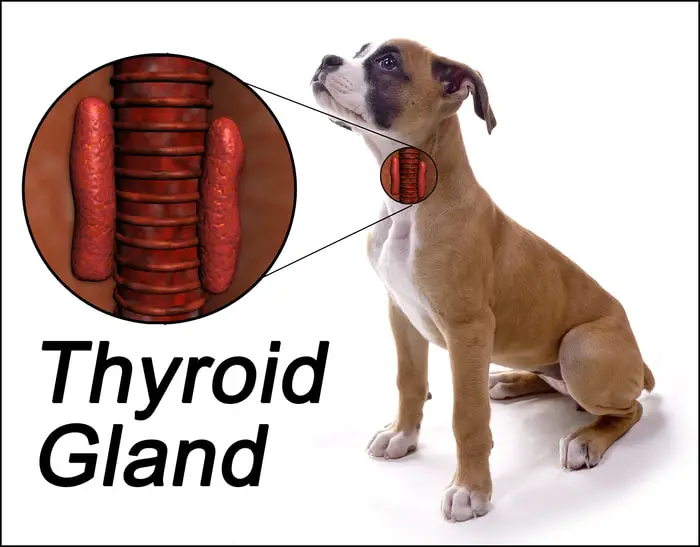
Causes of Hyperthyroidism in Dogs
Functional adenomatous hyperplasia (adenoma) affecting one or both thyroid lobes is the most common cause of pet hyperthyroidism.
- Iatrogenic hyperthyroidism caused by excessive thyroid hormone supplementation is recognized occasionally.
- Thyroid carcinoma is a rare cause of hyperthyroidism in your pets. In the dog, although thyroid carcinoma is the most common thyroid tumor, it is rarely functional.
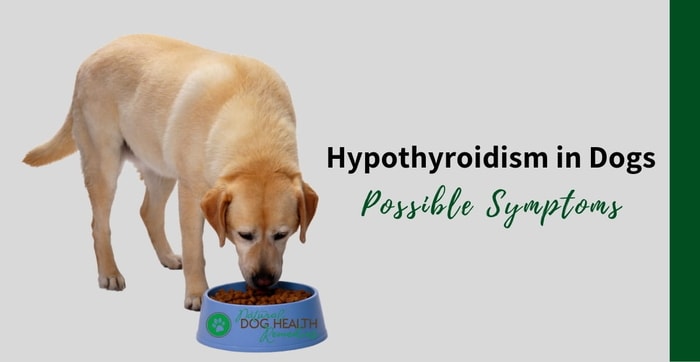
What are the Symptoms of Hyperthyroidism in Dogs?
The frequency and severity of the clinical signs are highly variable in pets with hyperthyroidism. They are influenced by the duration of hyperthyroidism, the ability of the body systems to cope with the demands imposed by thyroid hormone excess, and the presence of concomitant disease in older animals. In most cases, the symptoms of hyperthyroidism in dogs are slowly progressive with an insidious onset.
The significant presenting sign, therefore, is included:
- Progressive weight loss.
- Depression.
- Diarrhea.
- Excessive thirst.
- Increased energy.
- Increased appetite.
- Forced breathing.
- Rapid and heavy breathing.
- Vomiting.
- Hyperexcitability.
- Increased urination.
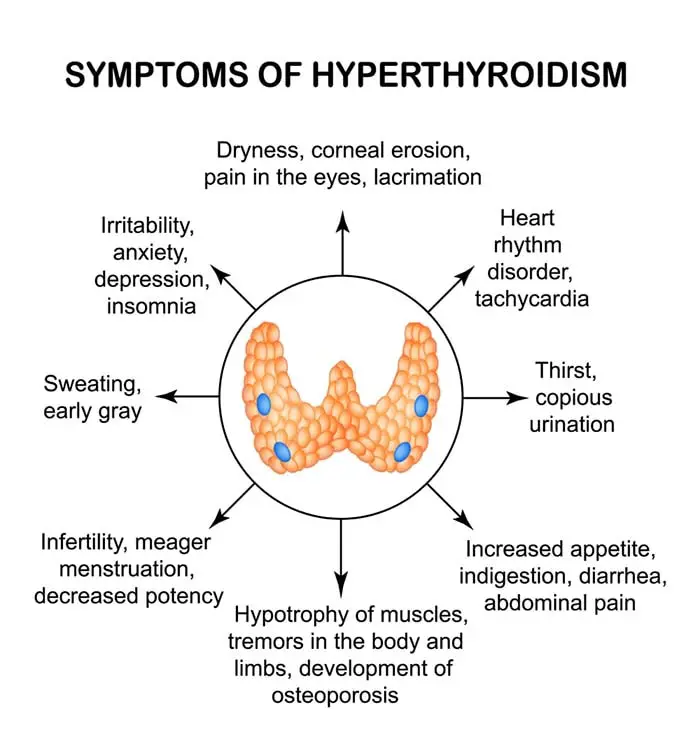
- Passes large volume of stool.
- Polyphagia.
- Congestive heart failure.
- A fast heart rate (Tachycardia).
- The enlarged heart (Cardiomegaly).
- Heart murmurs.
- Dyspnea (difficulty breathing).
- Poor body condition.
- Rapid breathing.
- Hyperactivity.
- Gagging.
- Facial swelling.
- Difficulties in swallowing.
- Change in the bark.
- Palpable enlargement of one or both thyroid lobes.
Thyroid palpation requires both skill and practice. The thyroid gland is not usually palpable in your normal pets. Enlarged lobes of the thyroid are usually located just distal to the larynx. Still, they can be pretty mobile, descend the neck, and occasionally pass into the thoracic inlet.
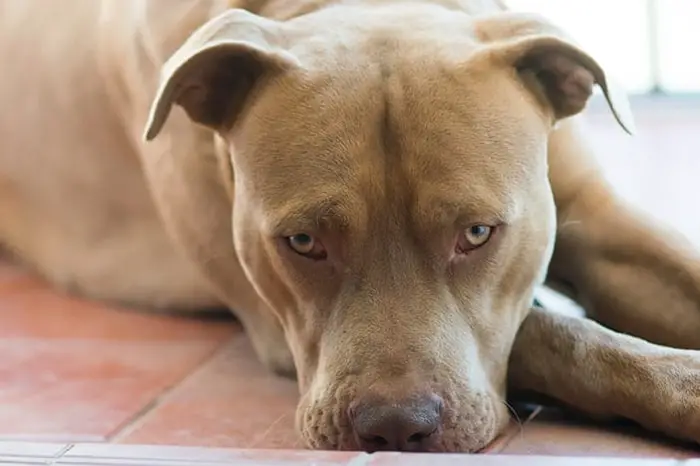
How Do Vets Diagnose Hyperthyroidism in Dogs?
Routine hematologic and biochemical screening tests are helpful not only because results may show alterations that support a diagnosis of hyperthyroidism but because they may also indicate evidence of concurrent disease in the older pets. Your vet may be able to do the test, and the most frequent haematologic change is relative polycythemia with a mild to moderate increase in red cell parameters ( red blood cell count, PCV, and Hb concentration ).
A mature neutrophilia and eosinophilia is also expected and probably reflects a stress response. However, eosinophilia and lymphocytosis are found in some dogs with hyperthyroidism.
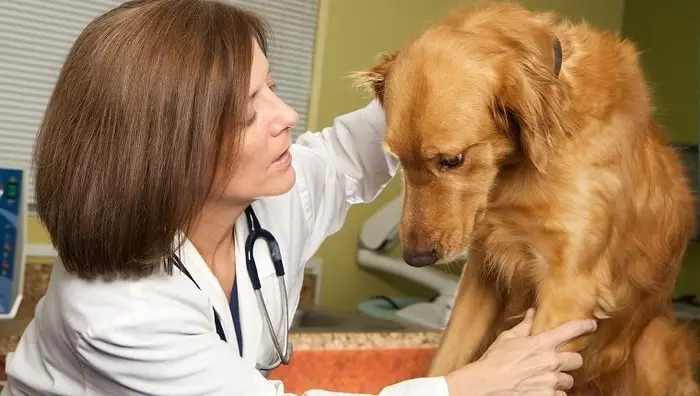
Thyroid functioning test is another method of diagnosis of hyperthyroidism in dogs. Increased serum basal thyroid hormone concentration measure is more important. In most cases, both serum T4 and T3 concentrations are increased, often markedly; however, in a few cases, serum T3 concentrations are in the normal range despite the apparent elevation of the serum T4 concentration.
Your veterinarian may need to conduct and diagnostic imaging is a good idea to understand the extent of the tumor fully. Thoracic radiography and echocardiography should be very helpful in assessing the severity of myocardial disease, and chest X-rays may be used to detect pulmonary metastasis.
What is the Treatment for Canine Hyperthyroidism?
Treatment depends on the underlying cause, but there are three options for the treatment of hyperthyroidism, and the options include antithyroid medication, surgical thyroidectomy, and radioactive iodine.
Antithyroid drugs are used for the medical management of hyperthyroidism. When they are preparing hyperthyroid dogs for surgical thyroidectomy to improve their general condition and reduce the risk of complications arising during surgery, your vets prescribed antithyroid drugs for the initial treatment of hyperthyroid dogs with concurrent azotemia to ascertain whether the significant deterioration in renal function is likely to occur after medical control of the hyperthyroid state.

If there is no deterioration in renal function after 3-4 weeks of treatment, your veterinarian recommended surgical thyroidectomy or radioactive iodine therapy for hyperthyroidism. Antithyroid drugs can also be used for long-term management of hyperthyroidism in a case when you refuse surgical treatment. Carbimazole inhibits thyroid hormone synthesis and is the antithyroid drug widely used in your dogs.
If hyperthyroidism is related to a tumor of the thyroid, in that time, your veterinarian requires surgical treatment. The surgical thyroidectomy is to remove all of the abnormally functioning thyroid tissue of your dogs. The treatment is highly effective for your pets, but it can be associated with significant morbidity and mortality if pets are not carefully assessed and stabilized before surgery. Preoperative treatment with carbimazole and propranolol will control the excessive thyroid hormone production and protect the heart against the effects of excess thyroid hormone.
Radioactive iodine therapy is a safe and effective method of treating your hyperthyroid dogs; it is a confined medical facility. Your dog will need hospitalization for around four weeks, depending on local laws on the use of radioisotopes. In these cases, precautions will be essential for handling your dogs in the home to reduce the risk of toxic reactions. Your veterinarian will help you with preventive measures.
Final Talk on Hyperthyroidism in Pets
Hyperthyroidism is an endocrine disease mainly in older dogs and cats. The disease is not so common, and clinical signs are primarily nonspecific. The clinical signs are confused with many other diseases and conditions. Various tests and screening can confirm the disease by an expert veterinary pathologist. Proper treatment cures the disease after a certain period. In this article, I have briefly described all about the disease. This article will help you a lot.